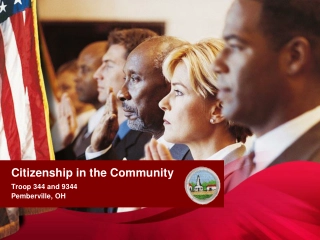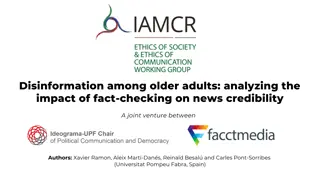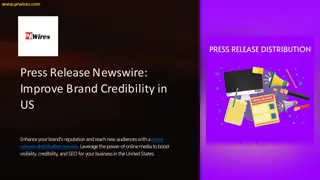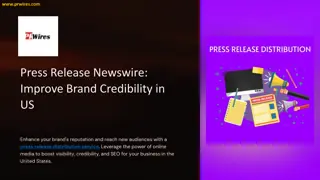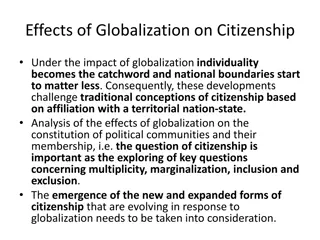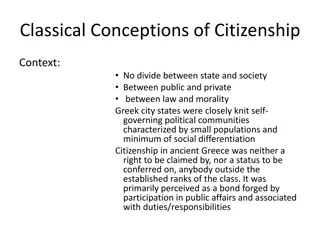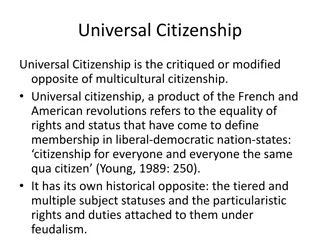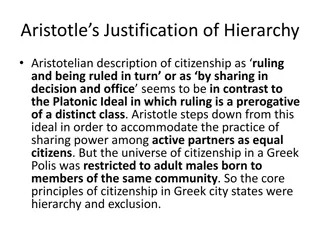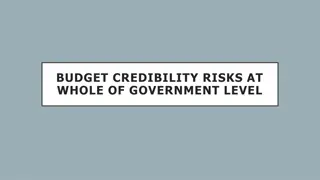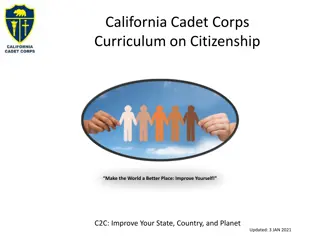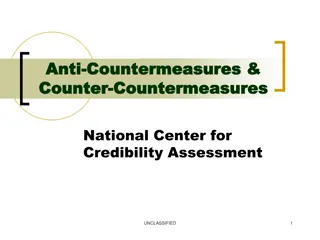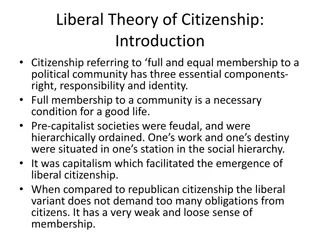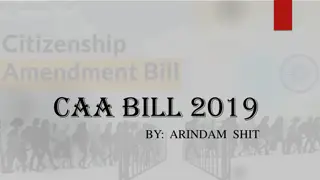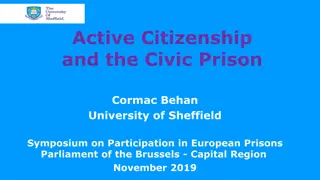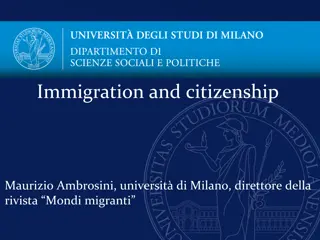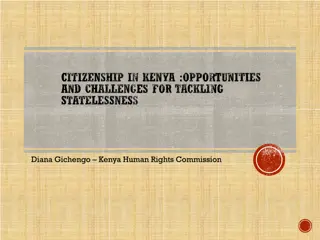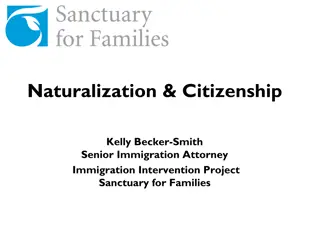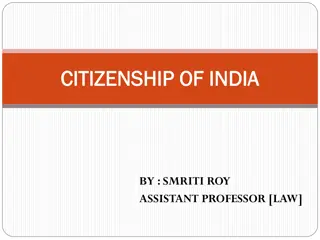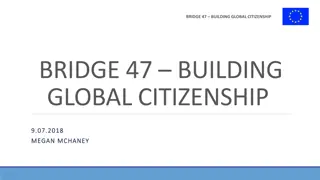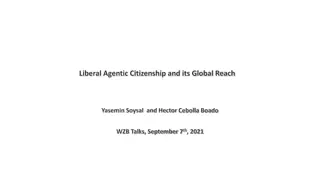Understanding Source Credibility in Global Citizenship Challenge
Enhance critical thinking skills by analyzing the credibility of web sources, particularly secondary sources, in the context of a global citizenship challenge related to wind energy. Learn how to evaluate web sources, identify types of web pages, and assess website authorship, content, and purpose to distinguish reliable information.
Download Presentation

Please find below an Image/Link to download the presentation.
The content on the website is provided AS IS for your information and personal use only. It may not be sold, licensed, or shared on other websites without obtaining consent from the author. Download presentation by click this link. If you encounter any issues during the download, it is possible that the publisher has removed the file from their server.
E N D
Presentation Transcript
Global Citizenship Challenge http://sustainability.rpi.edu/images/sustainability_studies.jpg Lessons 8 and 9
Lesson Objective Nod y wers To analyse the credibility of sources are they reliable? Are they valid? Are they bias? Develop and present a written personal standpoint on the use of wind farms as a sustainable energy source. Skills Objective - Sgiliau Critical thinking and problem solving. Facts, factors, differing opinions and viewpoints including those of peers Consideration and use of PESTLE
Credibility of sources Primary sources - you do not need to consider the credibility of primary resources as they are personal opinions of people. You will have spoken to this person first hand via an interview or through a questionnaire. Secondary sources secondary sources are a source that you have researched and somebody else has written. You need to be very careful with the credibility of secondary sources as they may have a bias or be sponsored by a political organisation that would affect the way it is written. Listen to the information on the next few slides before discussing the different types of secondary sources you could use for this challenge
Research and the internet The Internet can be a great tool for research, but finding quality web materials and using them to your advantage in your writing can be challenging.
Why do we need to evaluate web sources? Virtually any person can publish almost anything on the Internet. Unlike most print sources, web sources do not have to be professionally accepted and edited to be published. Does this make them reliable?
Types of web pages Informative pages Personal web pages Political/interest group pages Marketing-oriented or advertising pages Entertainment pages Think about the person/organisation writing on these web pages. Are they credible? (trustworthy)
Identify the website Assess the authorship, content, and purpose of the web site. This is important because many web sources are not checked for accuracy. some personal sites are used to express individual opinions about issues, but not necessarily the facts.
Examine for credibility Credibility may be compromised by misinformation or by unintentional neglect. Locating the name of the site s creator may be challenging.
Task: Read the background information on page 27 and the viewpoints for and against the Mynydd y Gwair wind farm on pages 28 and 29. Are these sources valid? How would you know this? Do any of these sources show bias? How do they do this?
Task Discuss in pairs the different types of secondary information you could collect on whether wind farms are a sustainable and alternative energy source and if the proposed Mynydd y Gwair wind farm should go ahead. Write your thoughts on page 30 of your booklet. http://t2.gstatic.com/images?q=tbn:ANd9GcRa1YgO-P55iHYHH-X0krsfUg-8Yrs0r-tkbLGUks6-Qp20QlGiuQ
Task What are your top 3 tips on assessing the credibility or validity of sources? Write your ideas of page 30 of your booklet. http://t2.gstatic.com/images?q=tbn:ANd9GcRa1YgO-P55iHYHH-X0krsfUg-8Yrs0r-tkbLGUks6-Qp20QlGiuQ
What is a personal standpoint? Your task is to write a personal standpoint on whether wind farms are a sustainable and alternative energy source and if the proposed Mynydd y Gwair wind farm should go ahead. You will be writing this in the form of a letter to the local Council. What you must include: Your own opinion and views on wind power as an energy source are they effective? What are the advantages and disadvantages of using wind farms? Opinions, views and arguments of others what are the opinions of the varying stakeholders? Do they agree or disagree with the use of wind farms. Do you agree or disagree with their opinions? Do their views matter? Why? Are they credible or bias in any way? Develop an argument throughout including identification of key information such as causes, changes, consequences, similarities and differences Challenge assumptions of using wind power as an energy provider Relevant political, economic, social, technological, legal, environmental (PESTLE) factors
How to write an effective letter 1. Correct use of addresses 2. Think about the organisation of your ideas 3. Consider your audience 4. Start with the main message 5. Use the correct tone - avoid everyday, slang or jargon language; avoid contractions (I m; it ll etc.); avoid emotive, subjective language (terrible, rubbish etc.); avoid vague words such as nice, good, get etc. 6. Limit each paragraph to one topic be concise and relevant 7. Draw your letter to a conclusion end with your most important point 8. End the letter appropriately Is Marketing Automation a Good Idea?
The task You now have the remaining part of this lesson and the whole of next lesson to write your personal standpoint. You may want to plan your ideas and thoughts before writing use page 32 0f your booklet to plan what you would like to include.
The task Now write your personal standpoint on page 33 of your booklet or alternatively you can use the computers to write your letter.


